Islands of Croatia’s Dalmatian Coast: Hvar and Korčula
Posted on September 16,2018 By John Compisi
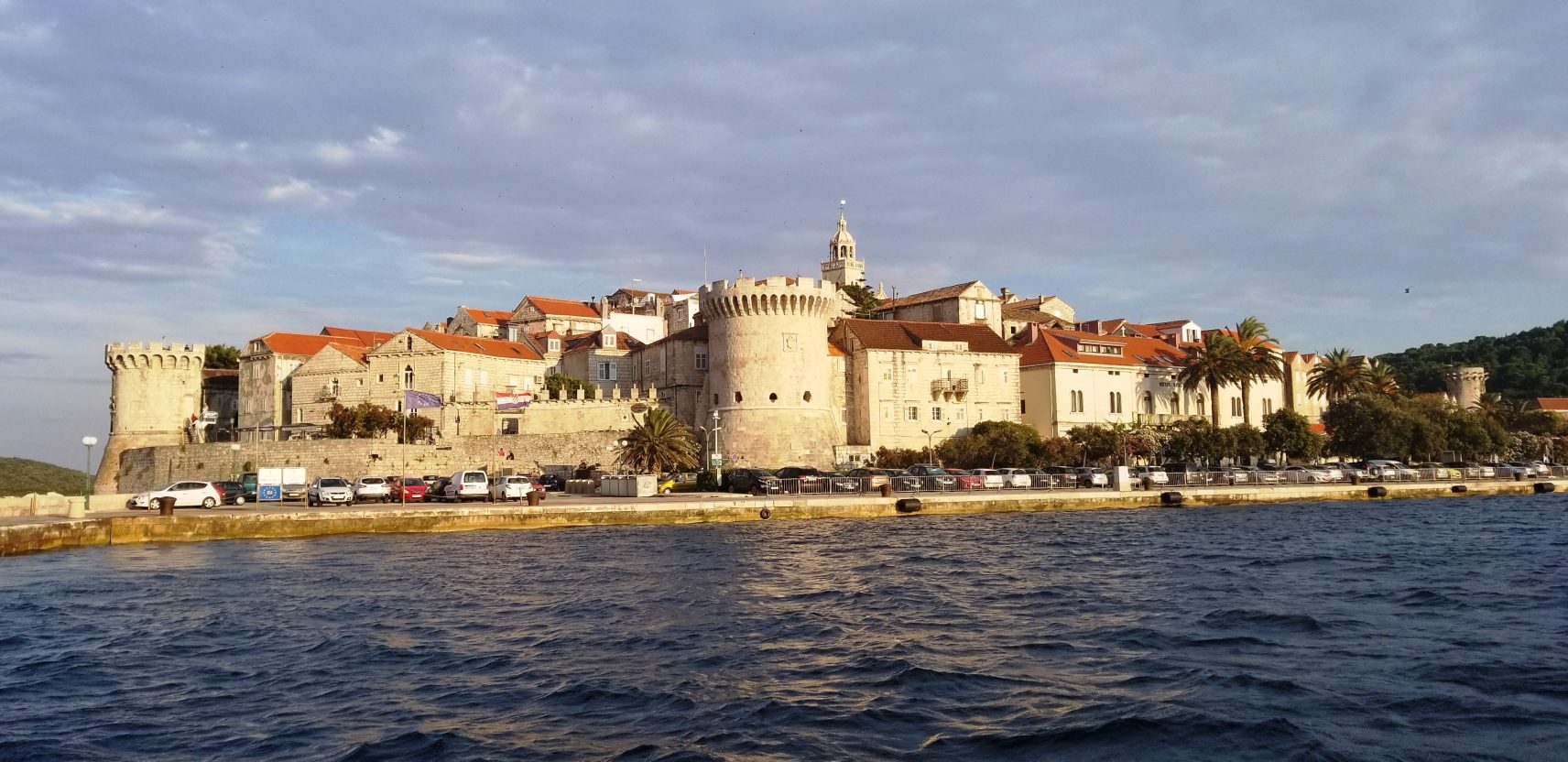
After our brief adventure in Split and the Palace of Diocletian, we boarded a ferry for the two hour cruise to the island of Hvar. Hvar has a fascinating history that includes being populated in prehistoric times and eventually by the Greeks, Romans, Venetians, Napoleon and the Austrians. It was an important naval base for both military operations as well as the silk route trade. Hvar’s wide fertile plain proved to be perfect for growing Lavender and Rosemary which were important to the French perfume industry. They also excelled in producing exceptional wine grapes.
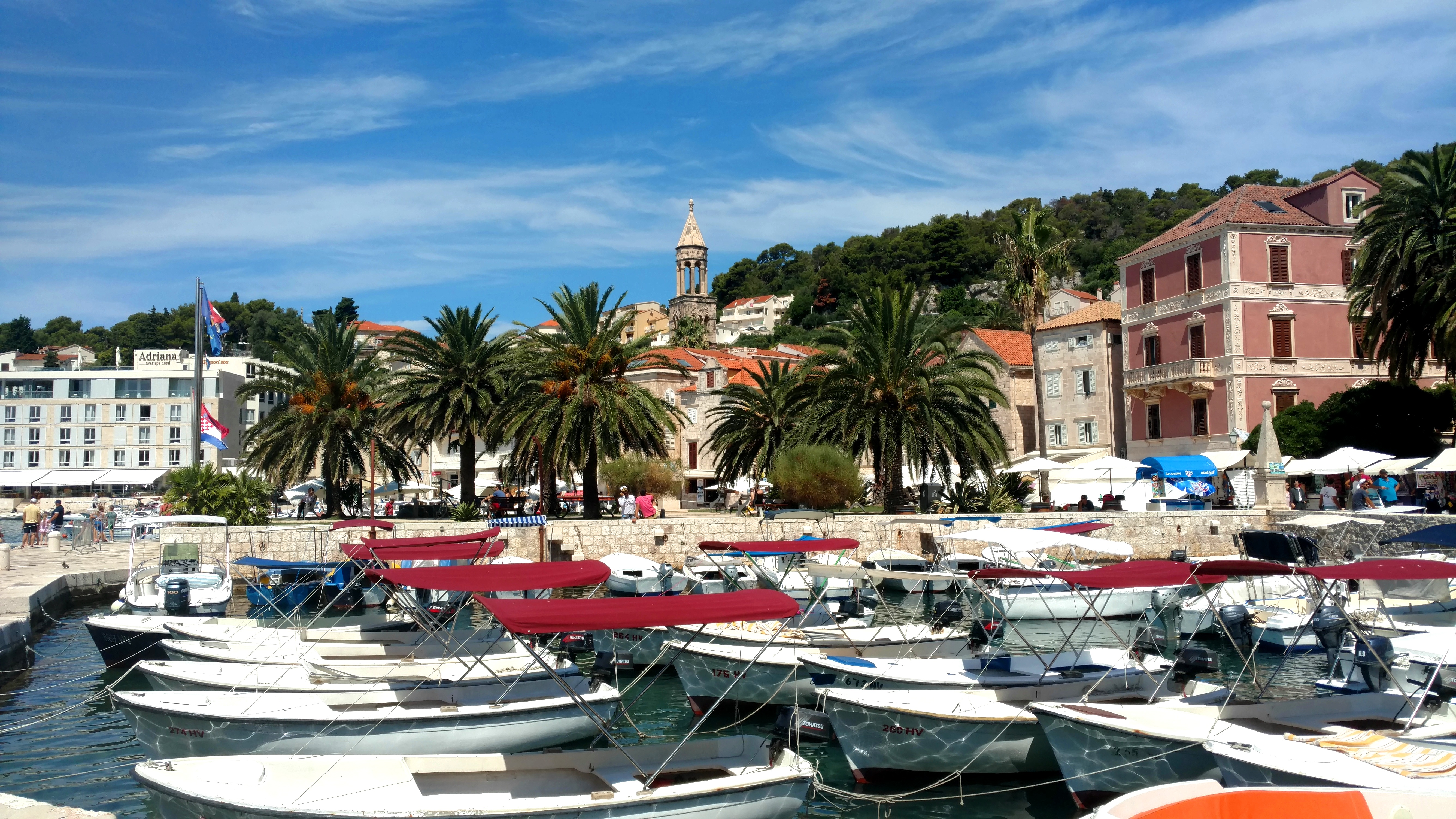 Fishing and pleasure boats pack the Hvar Marina (L.Compisi)
Fishing and pleasure boats pack the Hvar Marina (L.Compisi)
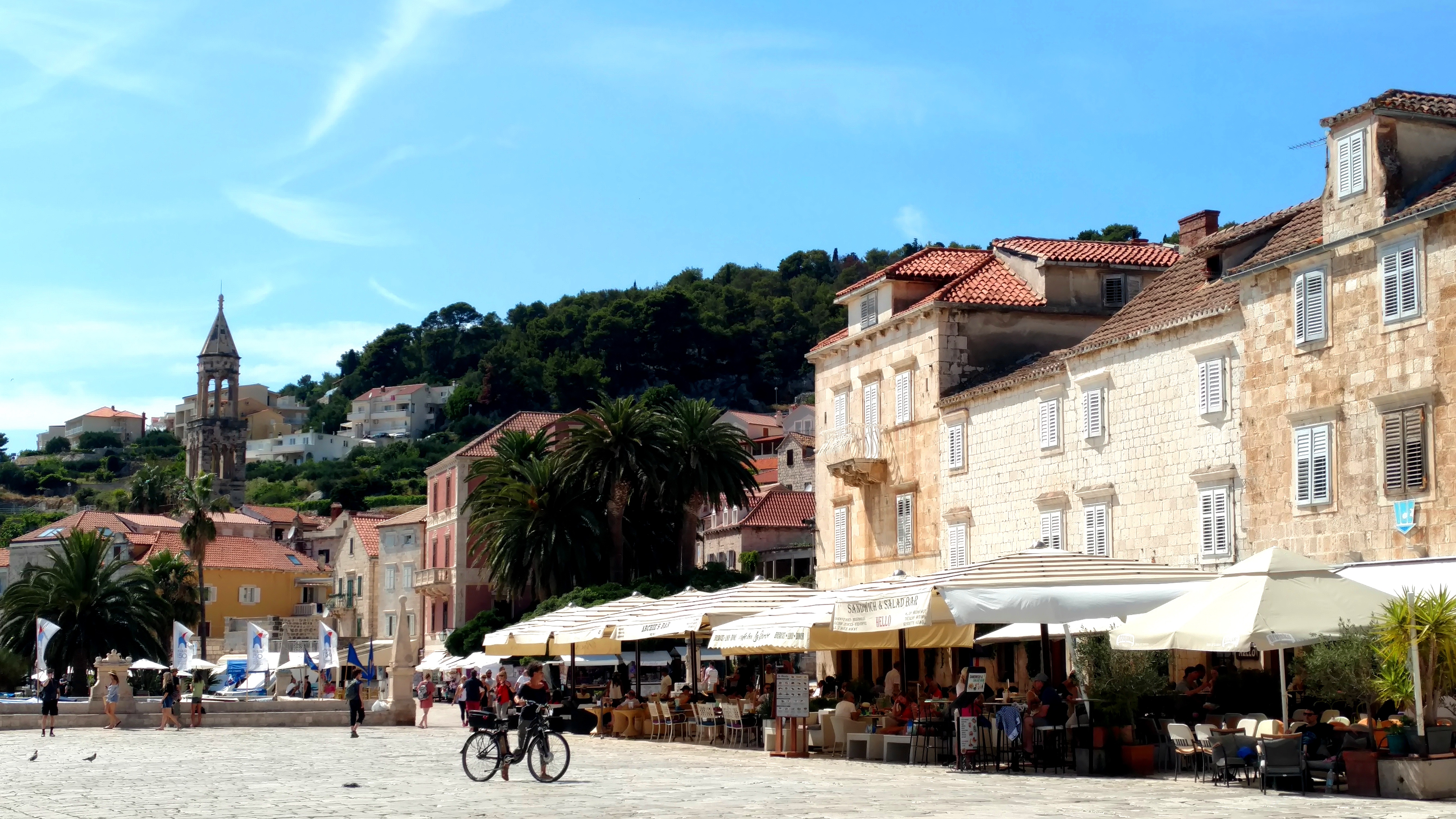 Cafes and restaurants line the seawall surrounding Hvar Marina (L.Compisi)
Cafes and restaurants line the seawall surrounding Hvar Marina (L.Compisi)
Today, tourism is the main attraction of Hvar for very good reason. The mild Mediterranean climate boasts average day time temperatures between 70° to 85° F between May and October, although it was in the low 90s while we were there in late June. The water temperatures also are attractive with temperatures usually staying between 73° to 81° F during the summer.
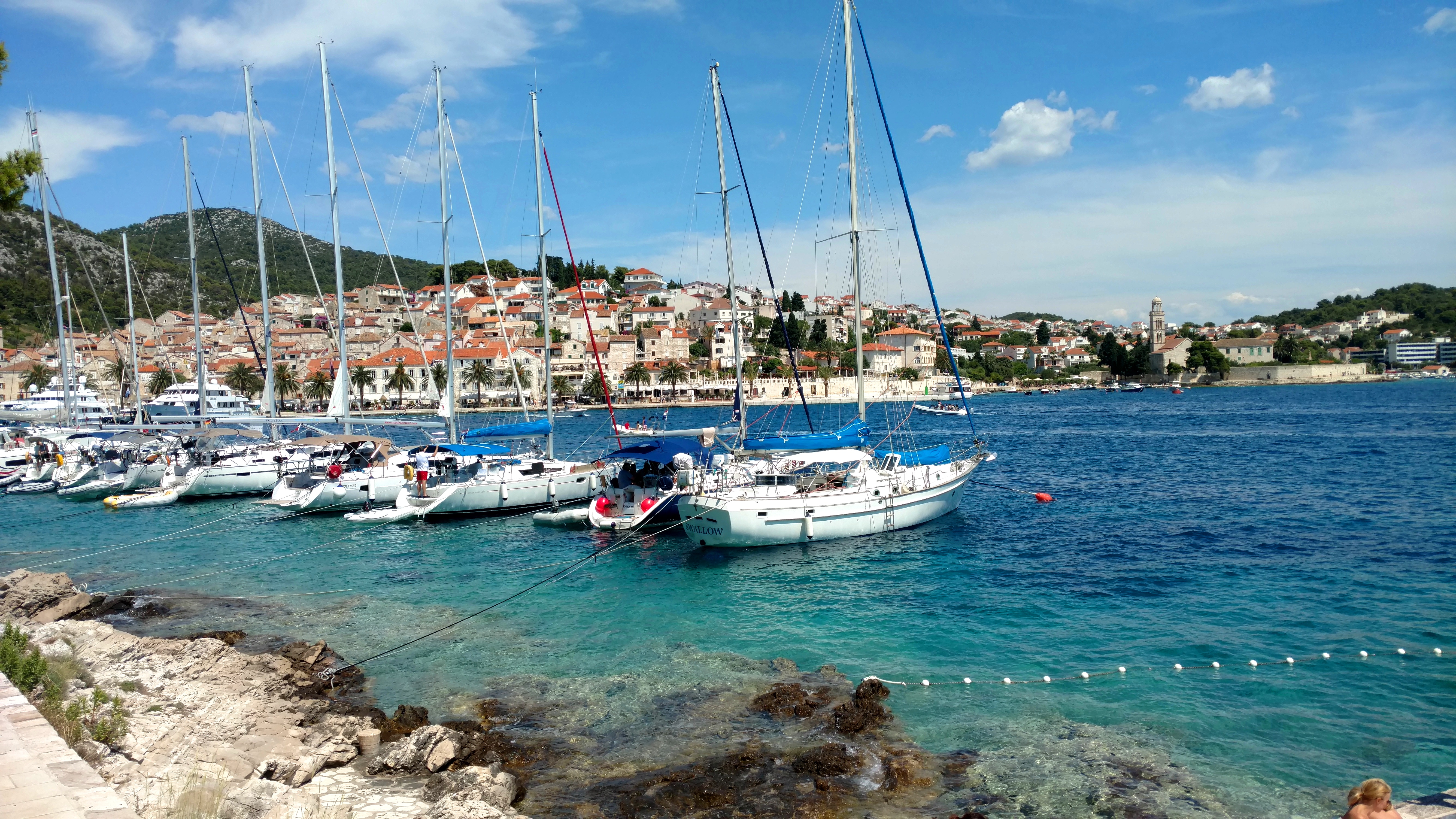 A sailing playground in the torquise waters of Hvar (L.Compisi)
A sailing playground in the torquise waters of Hvar (L.Compisi)
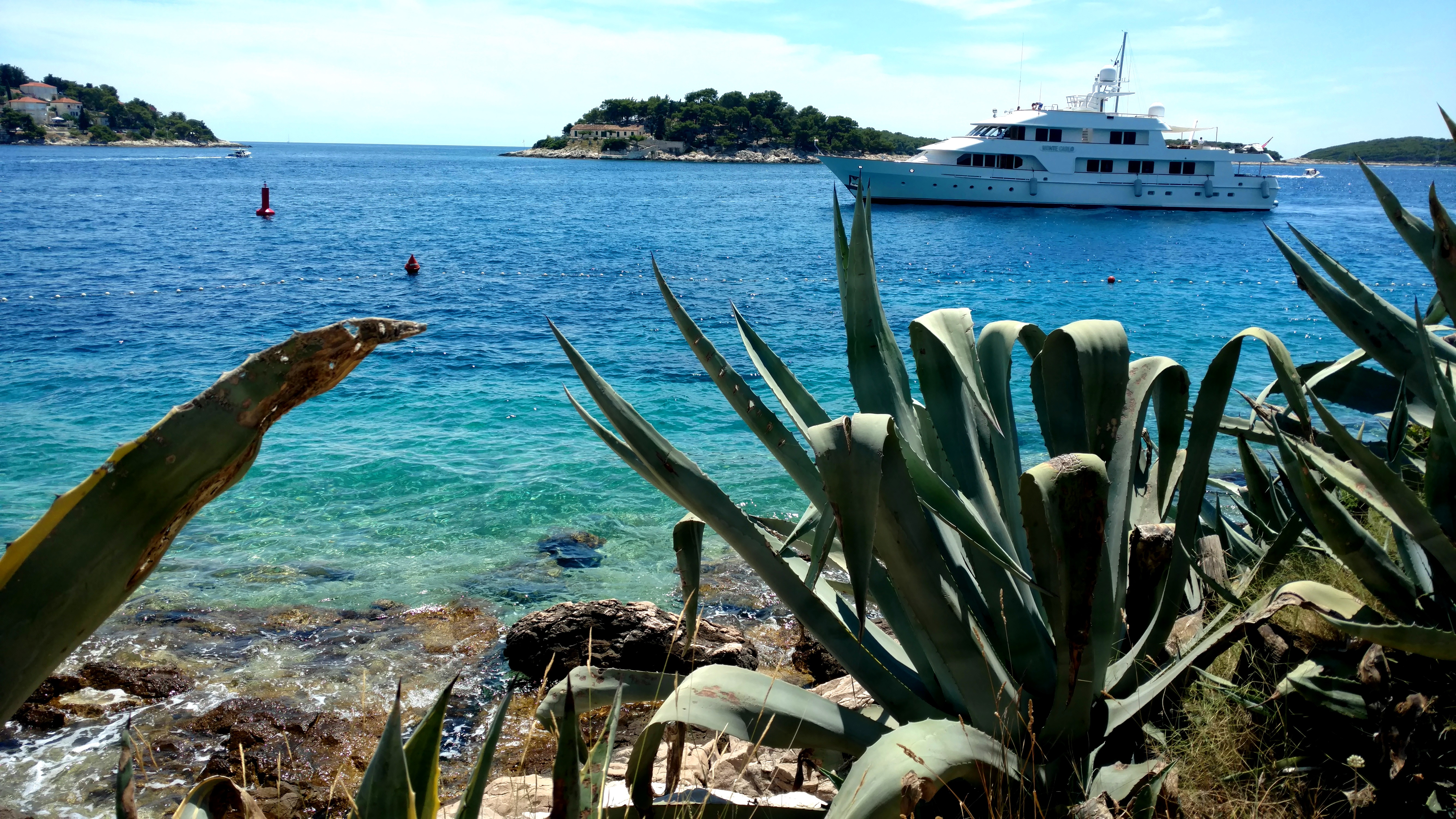 One of the many yachts moored in Hvar marina (L.Compisi)
One of the many yachts moored in Hvar marina (L.Compisi)
The island promotes itself as “the sunniest spot in Europe”, having nearly 2,800 hours of sunlight in an average year. Hvar City has beautiful beaches and quaint seaside architecture which make it very attractive to tourist from all over Europe. This is manifested by the large yachts that fill the harbor and the crowded café that overlook it.
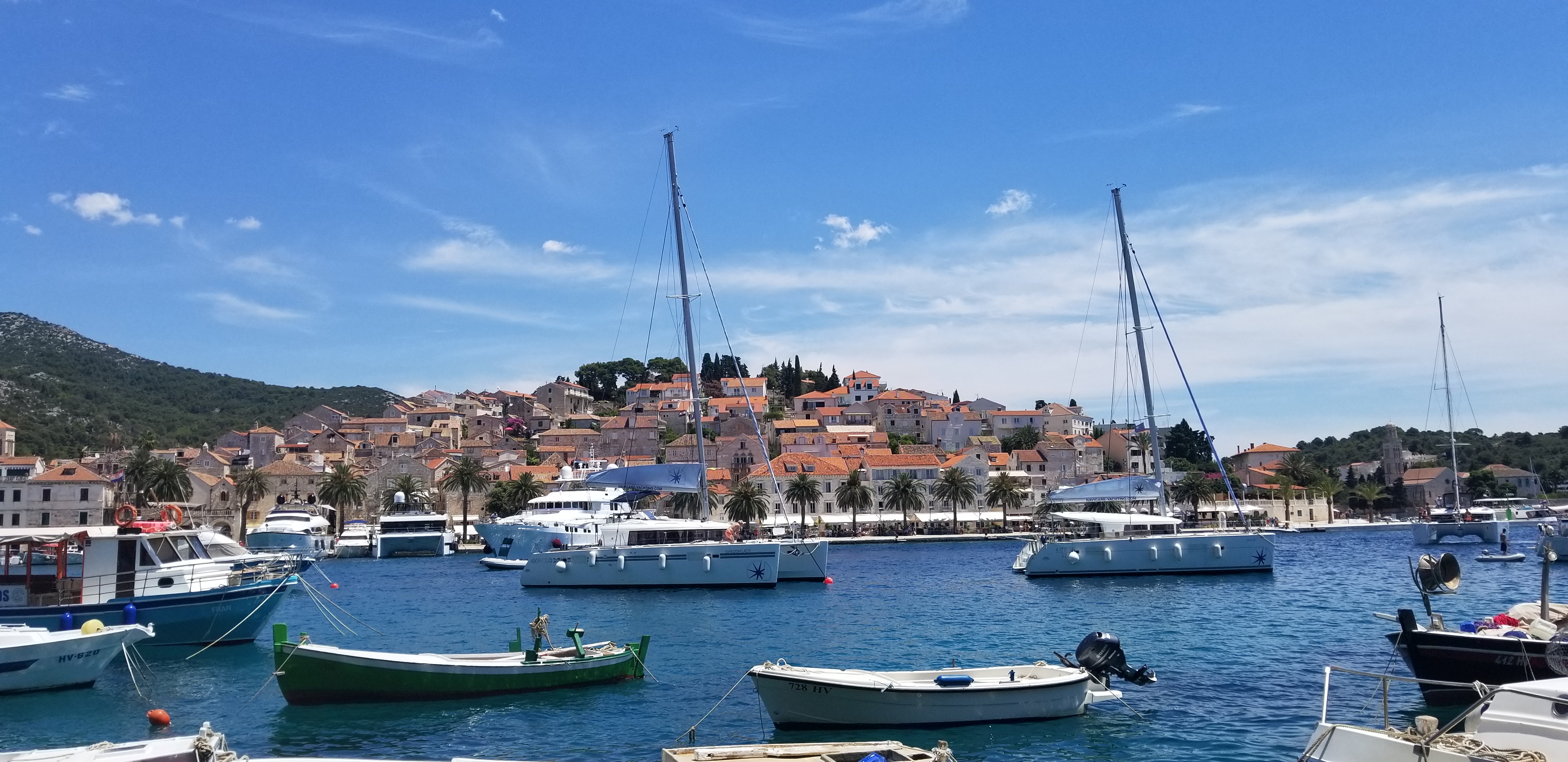 Many larger sailboats with the town of Hvar as backdrop (L.Compisi)
Many larger sailboats with the town of Hvar as backdrop (L.Compisi)
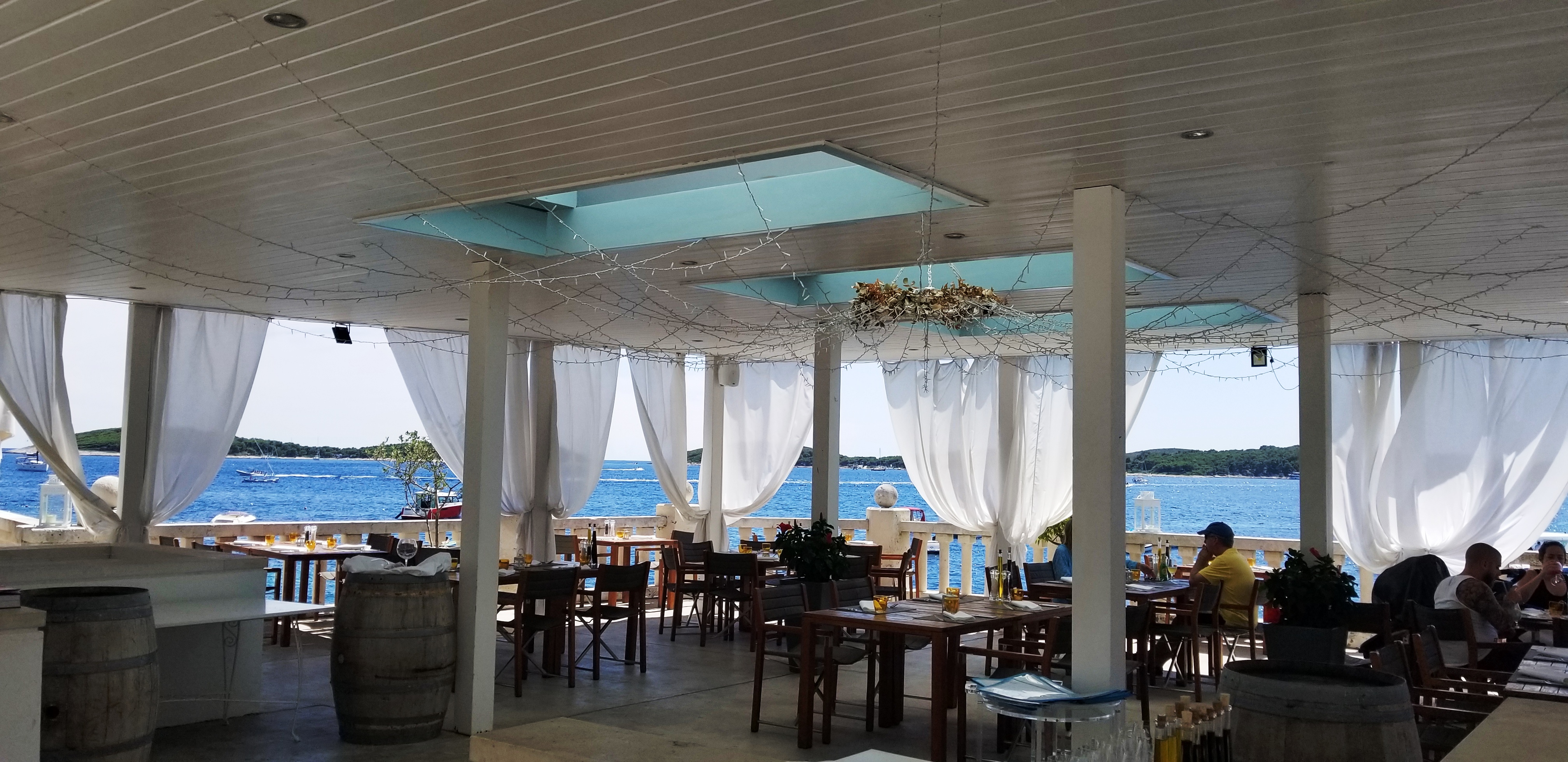 One of the more elegant restaurants along a gorgeous beach area (L.Compisi)
One of the more elegant restaurants along a gorgeous beach area (L.Compisi)
After a delightful day in Hvar enjoying the beaches, café, bars and restaurants we took a large catamaran to the Island of Korčula. The cruise was just over an hour in length. Korčula is a fortified town on the eastern coast of the island of the same name. Slightly larger in population than Hvar, Korčula town offered a very interesting old town that was originally an island itself.
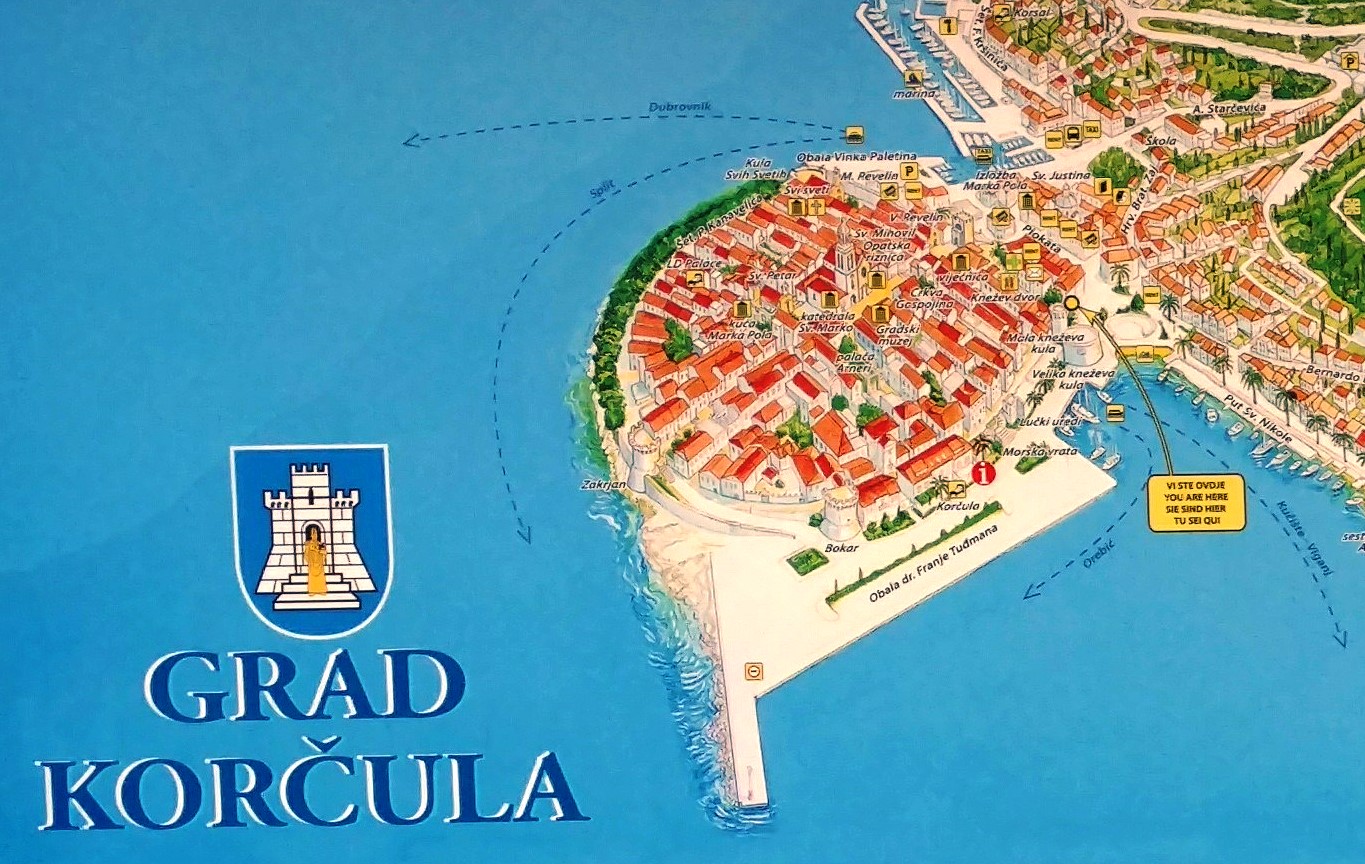 A graphic of Korčula (L.Compisi)
A graphic of Korčula (L.Compisi)
Unlike Hvar, whose main commercial area was flat, Korčula was quite hilly making it much more interesting from an architectural and photo taking perspective. St. Mark’s Cathedral, also called Korčula Cathedral, is in the center of the old town and commands the highest point. Korčula has many outdoor café and restaurants along the waterfront as well as in the central plaza by the Cathedral and even along its steep side allies which form ‘spokes of the wheel’ that the city resembles.
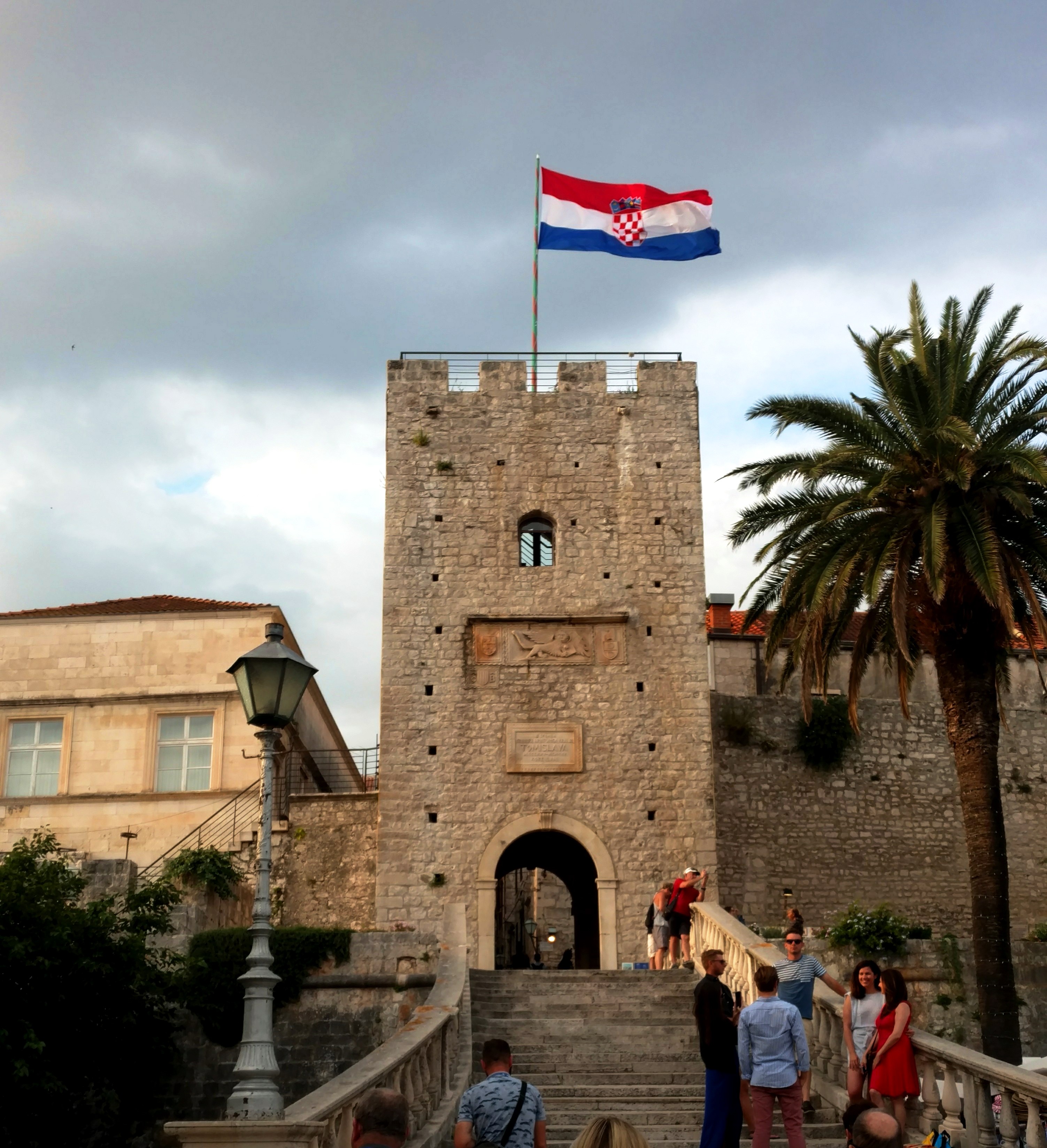 The stairs leading to the beautiful medieval main entrance to Korčula town (L.Compisi)
The stairs leading to the beautiful medieval main entrance to Korčula town (L.Compisi)
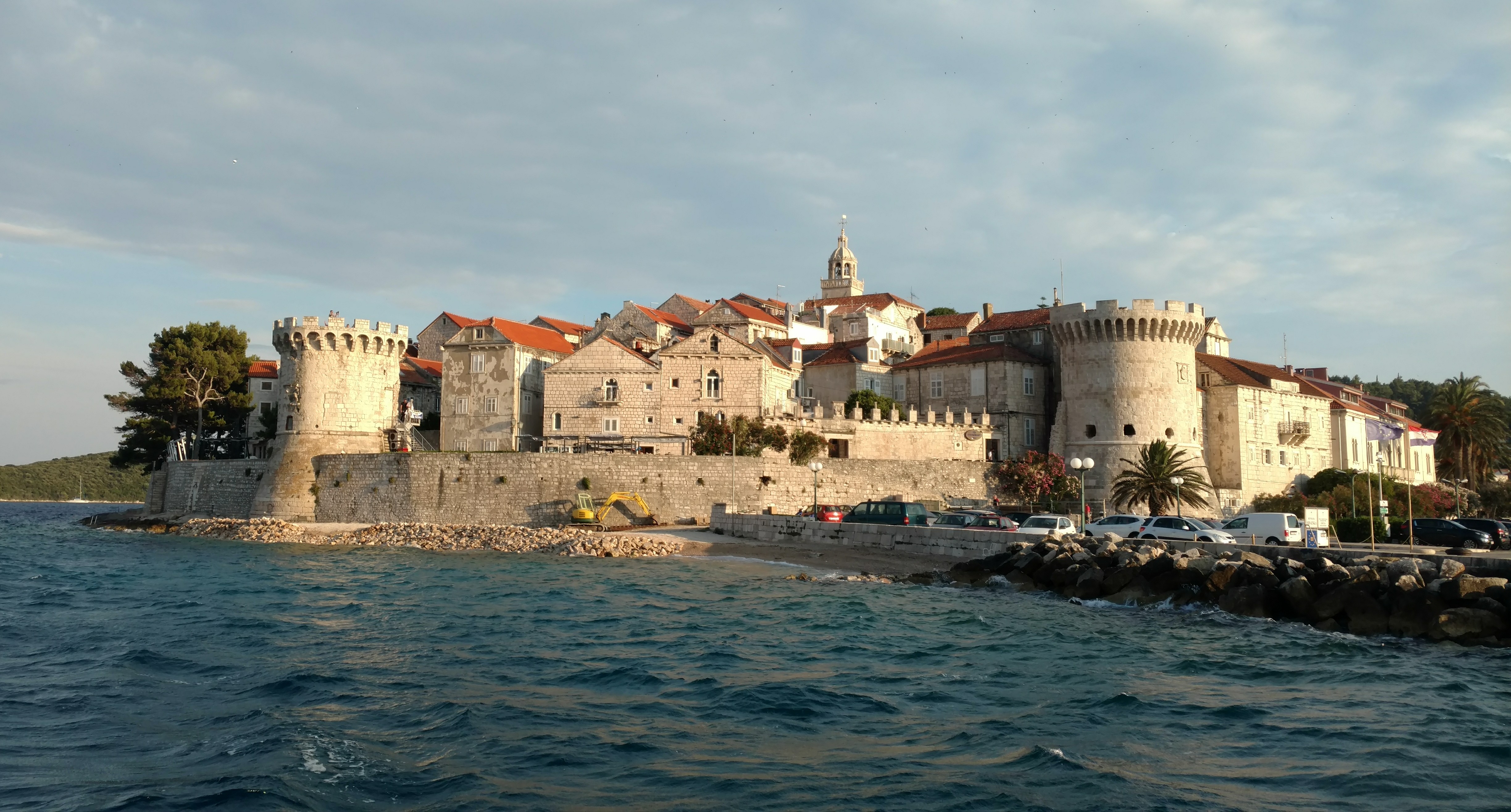 Korčula as seen from the seaside (L.Compisi)
Korčula as seen from the seaside (L.Compisi)
We stayed at the Hotel Korsal in Korčula which was a short walk from the old town area. The rooms were very nice with many having views overlooking the marina and the old town. The restaurant has a good wine list, a wine cellar and services solid local cuisine.
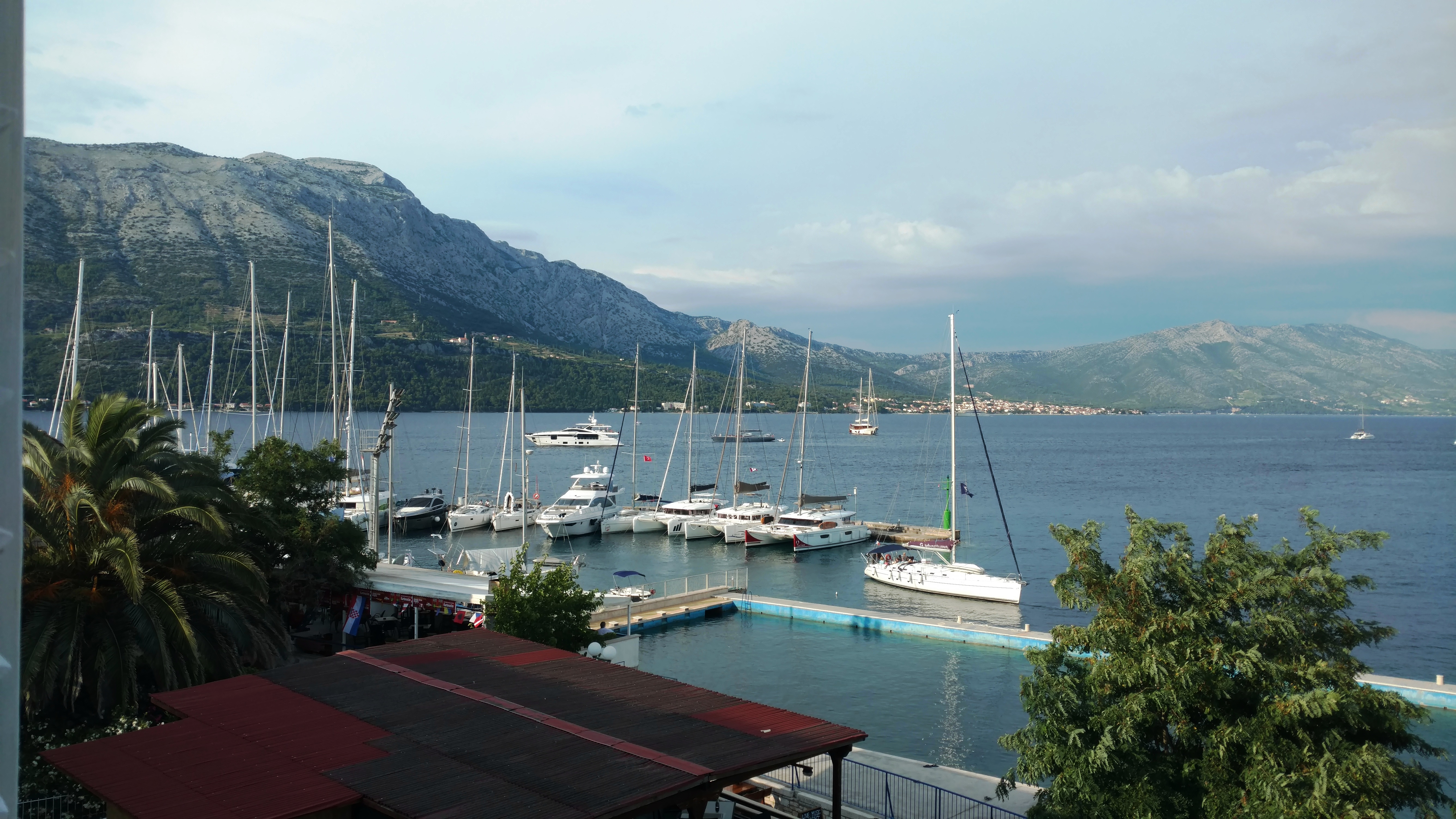 View from our room at Hotel Korsal (L.Compisi)
View from our room at Hotel Korsal (L.Compisi)
Korčula claims to be the birthplace of Marco Polo and is investing in the restoration of his legendary home but there is little hard evidence that he is truly from there rather than Venice. There is also a Marco Polo museum in Korčula
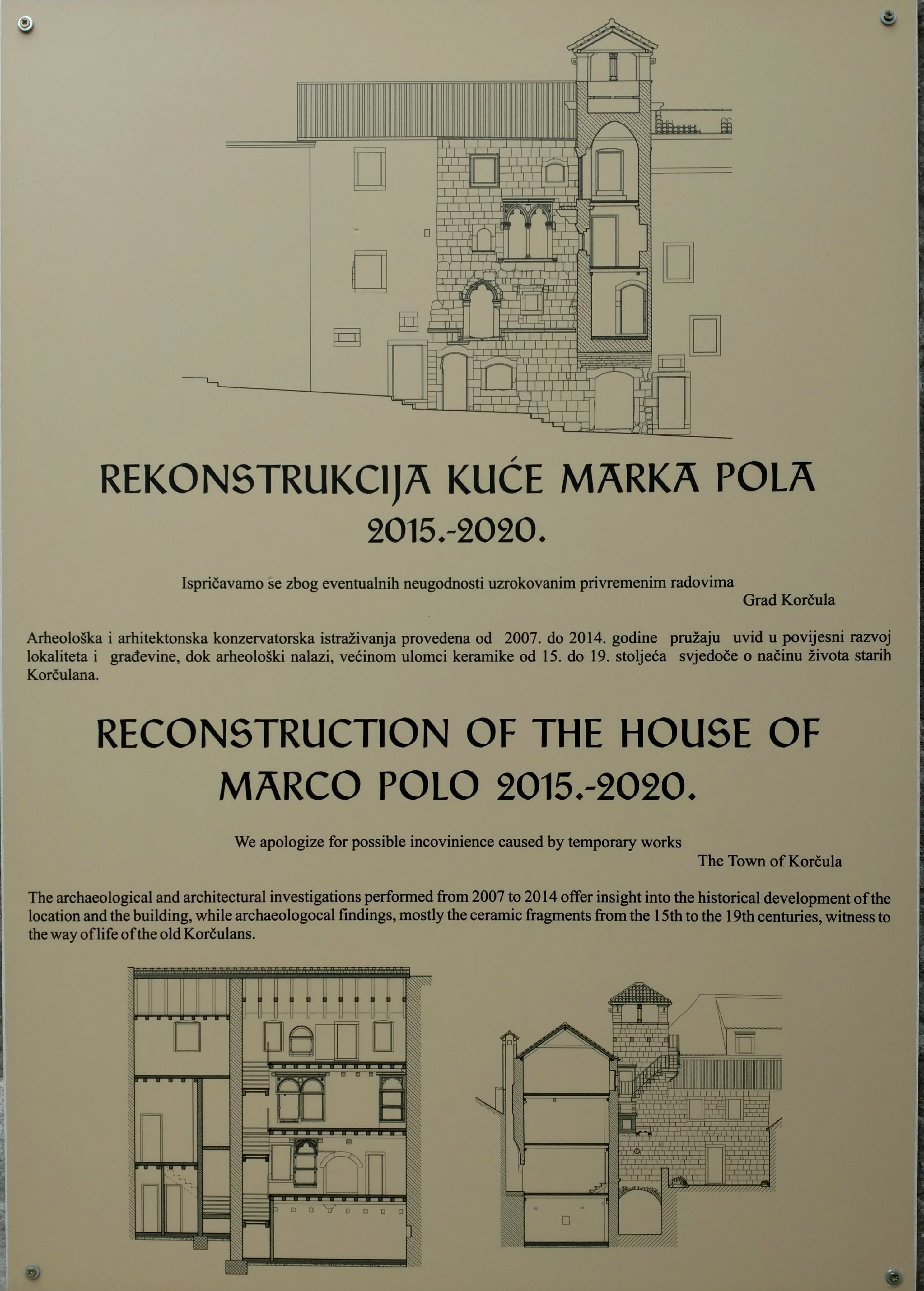 Plans for the restoration of the ‘home’ of Marco Polo(L.Compisi)
Plans for the restoration of the ‘home’ of Marco Polo(L.Compisi)
Getting there: You can take the ferry with your rental car or actually buy a bus ticket in Split and they will ferry you to Hvar and then transport you by bus to the center of town. Either option requires early purchasing of tickets during the high season. This ferry route to Korčula from Hvar runs 3 journeys per day in high season. In the low season it runs 1 journey per day. Journey time is between 1 hour 05 minutes and 1 hour 45 minutes depending on the route. The main Croatian ferry operator, Jadrolinija, runs a service linking Korčula Town with Split, Hvar, Dubrovnik and (from May to September) Bari, Italy.
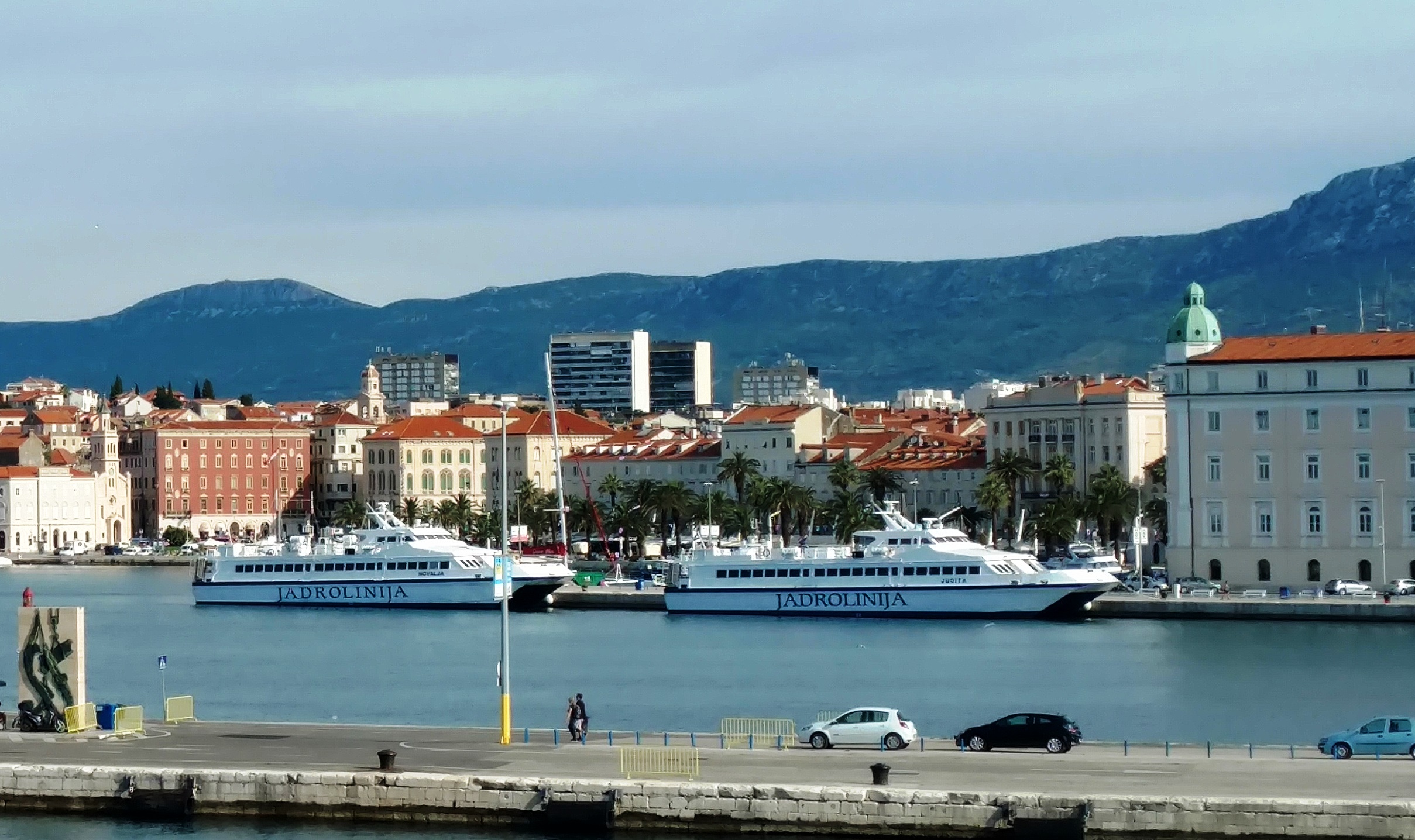 Jadrolinija Ferries in Split heading to Hvar & Korčula (L.Compisi)
Jadrolinija Ferries in Split heading to Hvar & Korčula (L.Compisi)
When to visit: Hvar and Korčula are definitely worth visiting when the water and air temperatures are warmer but we would recommend late May – early June or late September – early October when the temperatures are a bit more moderate and the crowds have thinned.
Two or three days each is all you need to enjoy these beautiful and historic islands along the Dalmatian Coast of Croatia. These are unique world treasures. Check back for the next story about our most excellent European Adventure including Bosnia-Herzegovina, and Dubrovnik.
Great post ?
Sounds like you had a wonderful trip. Thanks for sharing.